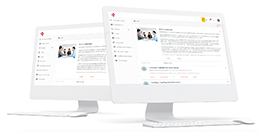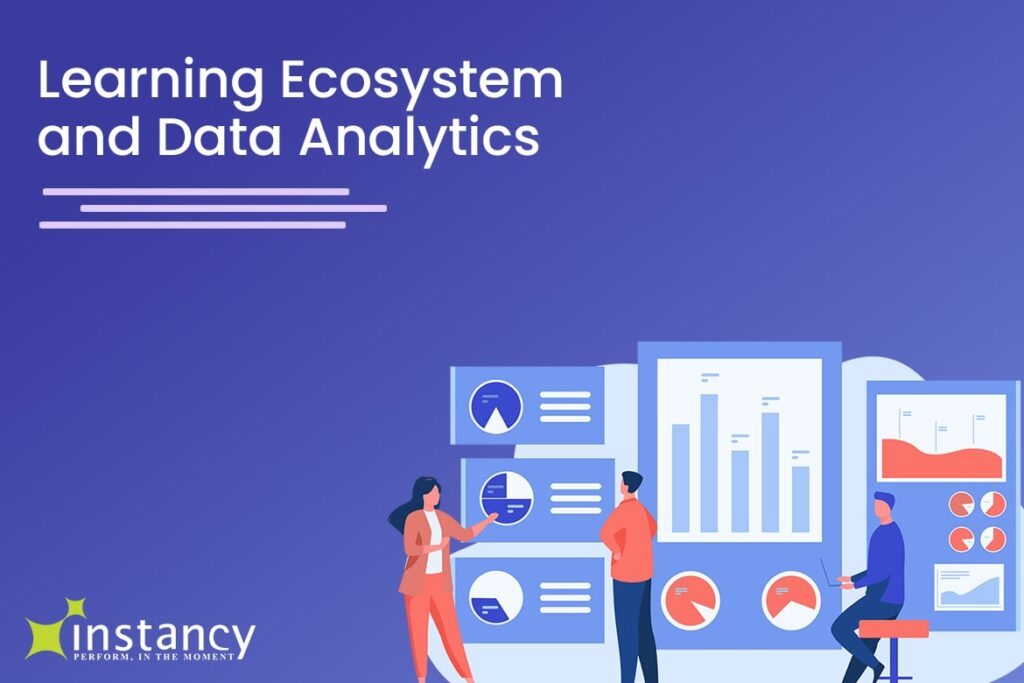Think about how often you review data on a daily basis. Our minds receive data so often we may not even realize it. Now drill down to your organization. Do you think they analyze a lot of data? The answer is yes, but there is always more data to examine! You think, “But that data analysis is called data mining. How does that relate to learning?”
Leveraging the power of big data and learning analytics gives Learning and Development professionals a competitive edge.
To put it simply, learning analytics is the collection, measurement and reporting of learners’ data (while they are engaged in the learning process), which can be used to gain valuable insights into the learning experience and find ways to optimize and improve that experience.
Why Learning Analytics?
There are multiple reasons to leverage learning analytics: improved engagement, personalized learning experiences, effective e-learning programs, increased retention, behavior prediction … and the list goes on. Evaluating learners’ experiences on a consistent basis helps Learning and Development (L&D) teams improve learner engagement by creating or tweaking training programs that are specifically designed for the learner. This personalization results in increased knowledge transfer and application.
Through learning analytics, L&D can also pinpoint problems that are hampering learners’ performance and provide them with the necessary tools or resources to perform better. Analytics turns learners’ data into actionable insights, which may also include improving the learning culture, improving process efficiency and leadership development, and more.
How Can You Leverage Learning Analytics?
Many approaches to learning analytics are based on the Kirkpatrick model of evaluation, which uses four levels of evaluation:
- Learner reaction: the learners’ feedback on the training
- Learning: the learners’ acquisition of knowledge and skills as a result of the training
- Behavior: the learners’ application of new knowledge and skills on the job
- Results: the impact of learners’ improved performance on business outcomes
Although it is easy to track levels one and two, tracking the higher levels can be a constant struggle. However, they are what really give purpose and value to the entire practice.
Level 3 involves both pre- and post-training measurement of learners’ behavior. This measurement can be, but is not necessarily, a reflection of whether participants actually learned the subject material.
Level 4 requires both pre- and post-event measurement of the training objective, such as reduced cost, improved quality and efficiency, increased productivity, employee retention, increased sales, and higher morale. This measurement is where learning analytics plays a vital role. An LMS equipped with the right analytics and reporting tools will provide the L&D team with the right data, custom reporting capabilities through graphical charts and tables, easier navigation and management, and more.

An LMS equipped with a reporting and analysis features is capable of tracking learners’ performance, engagement and knowledge retention. In its raw form, this data may not mean much, but when seen through an analytical lens, they reveal valuable insights that L&D teams can use to customize training programs. With the fast-changing digital landscape, many LMS and analytics tools are now also employing artificial intelligence (AI) for the interpretation, analysis and application of captured data.
Now Is the Time for Learning Analytics.
Learning analytics is not some distant reality but a valuable solution for every organization. In a marketplace flooded with evolving technology, there is no denying that the learning industry will continue leveraging analytics on a larger scale to understand learner behaviors and adapt training accordingly.
With every department in today’s organizations facing pressure to show its value, L&D stands to benefit more from learning analytics. L&D departments can back their budget with analytics, thus adding more credibility to their work.
Considering the money spent on L&D programs, it is only fair that organizations seek to find value in them.
L&D leaders need to be proactive and leverage learning analytics to justify their requirements and remain competitive.
The Instancy Learning Platform provides robust reports and data analytics. Give us 15 minutes and we will show you the power of Instancy’s analytical tools.





